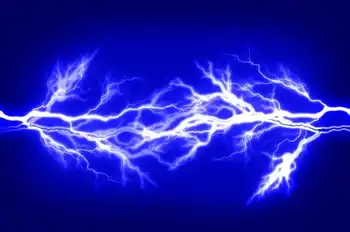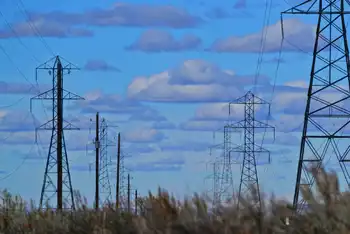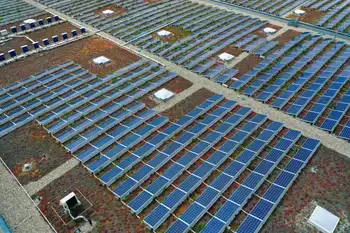Fuel cell-powered devices getting closer
By Associated Press
Substation Relay Protection Training
Our customized live online or in‑person group training can be delivered to your staff at your location.

- Live Online
- 12 hours Instructor-led
- Group Training Available
Tiny fuel cells, powered by combustible liquids or gasses, have long been touted as the eventual solution. Potentially, they could power a laptop for days between refills.
But fuel cells have perennially remained a year or two away from reaching the market as companies have worked on making them small, cheap and long-lasting, while making sure they don't overheat.
The U.S. government removed a key roadblock this year when the Department of Transportation amended its hazardous materials regulations to allow cells with methanol, butane or formic acid to be carried on airplanes. Methanol and butane are flammable, and formic acid is corrosive.
“That was one of the largest challenges to this market, to overcome that regulation issue,” said Sara Bradford, an energy and power systems consultant for Frost & Sullivan.
Fuel cells, in which a tiny amount of fuel flows into a small chip to generate electricity without combustion, would allow users to skip the wall plug and simply swap out a fuel cartridge to continue listening to music or check e-mail.
Ms. Bradford thinks products are now truly a year or two away, as electronics manufacturers show more interest and fuel-cell makers move beyond trade-show prototypes.
“We are closer, much closer, than even two years ago in terms of the companies' internal designs, how they've met their milestones and just the amount of testing and evaluation that's going on right now,” Ms. Bradford said.
Lilliputian Systems Inc., a Wilmington, Mass., firm founded by former Massachusetts Institute of Technology researchers, plans to introduce a portable fuel cell late next year for any device that can be charged via a USB port.
The cigarette-pack-size charger will use a canister of butane, the same fuel used in cigarette lighters, to juice up an iPod, BlackBerry, GPS device or digital camera, said Mouli Ramani, Lilliputian's vice-president of business development.
Each teaspoon of the fuel can provide 20 times the run time of a battery of the same size. The charging system would likely sell for $100 to $150 (US) with refill cartridges retailing for $1 to $3, he said.
MTI MicroFuel Cells Inc. has been working on fuel cell technology since 2000. In 2002, was showing a prototype it planned to bring to market by 2004.
Peng Lim, the Albany-based company's chairman and chief executive, said MTI has been making significant progress recently. It's current methanol fuel cell can produce about three times the energy of a lithium ion battery, common in cell phones. With further improvements, the cell could one day last ten times longer than lithium, he said.
MTI plans to introduce an external charger by late 2009 as it works with electronics manufacturers on building fuel cells into devices.
Lim said MTI has signed partnerships with the mobile phone division of Samsung Electronics Co. of Korea, a Japan-based digital camera company and Neo Solar Co. Ltd., which makes computers that are smaller than laptops.
Lilliputian also plans to transition to embedding fuel cells in gadgets. Mr. Ramani said the company has signed commercialization agreements with three large, multinational entities he cannot yet name.
Panasonic is promising a fuel cell that can power a laptop for 20 hours on a cup of methanol, but the company says it won't hit stores until 2012.
Medis Technologies Ltd. has come out with a 1-watt liquid borohydride fuel cell recharger that can provide 30 hours of cell phone talk time. The 24-7 Power Pack is slightly larger than a deck of cards and can't be refueled, so it has to be recycled once it's exhausted.
Not all manufacturers are sold on fuel cells, at least not in the near term.
Matt Kohut, competitive analyst for Lenovo Group Ltd., the world's No. 4 PC maker, said fuel cells will eventually power laptops but he doesn't see commercialization for at least five years.
The industry needs to unite to standardize the technology, he believes, and the DOT's limiting of fuel cartridges to smaller than 7 ounces might not provide adequate power for early devices, Mr. Kohut said.
Consumers are used to getting a free battery charge from any electrical outlet, so refill cartridges would have to be “as ubiquitous as cigarettes and bottles of Coke in every 7-Eleven” in order for fuel cells to take off, Mr. Kohut said.
Lenovo is moving toward silver-zinc batteries, which have 20 to 30 per cent higher capacity than lithium ion batteries and don't wear out as fast, Mr. Kohut said.
Toshiba, which has demonstrated fuel cell prototypes at the Consumer Electronic Show during the past few years, continues to develop the technology but doesn't have any firm dates for commercial use, said Duc Dang, group manager for product development for Toshiba America Information Systems Inc. Next year, the company hopes to begin shipping lithium batteries that charge faster.
Mr. Ramani said he understands the skepticism about fuel cells, since they've been “the technology of tomorrow” for a few years.
“We're not around the corner,” Mr. Ramani said. “We're still 12 months to 15 months away from having this in consumers hands.”











